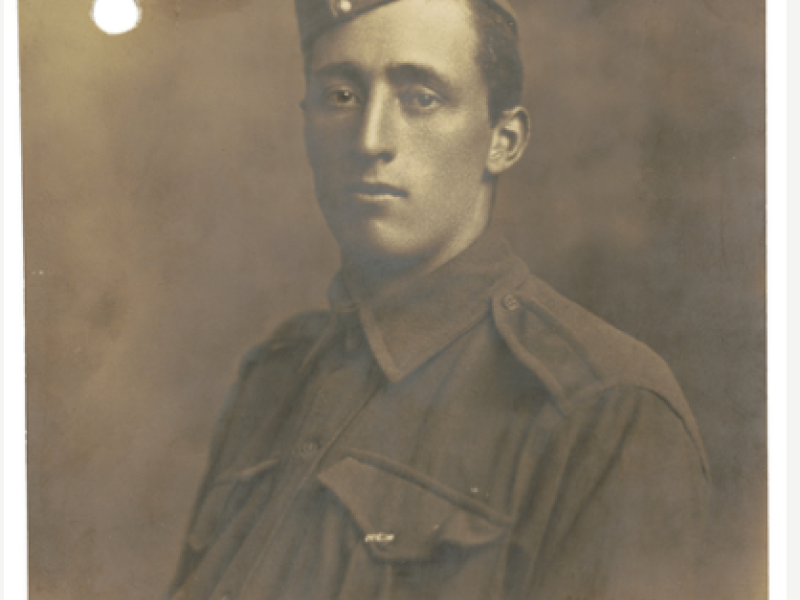Private Joseph Alan Cordner, 6th Battalion, AIF
Joseph “Alan” Cordner was born on 6 May 1890 in Bridgewater on LoddonVictoria, the eldest of two sons of Joseph and Jessie Cordner. Alan’s family moved regularly due to his father’s job and Alan spent time in Dimboola, Coleraine, Warrnambool, and Hamilton, where he attended boarding school. When Alan was 11 his mother died. Alan went on to work as a bank clerk, as did his brother.
Alan Cordner was captain of Hamilton College, excelling in football field that he excelled. In 1911, he joined the Geelong team for two years before moving to Collingwood Football Club. He showed “considerable promise” as a “fine, manly player”.
Alan enlisted in the Australian Imperial Force on 22 August 1914, just after his brother, Clem. That afternoon, he played his last Victorian Football League (VFL) game against Essendon at the East Melbourne Cricket Ground. Cordner was one of the first Australian Rules footballers to enlist.
Cordner sailed as part of B Company, 6th Battalion, on 19 October 1914, aboard HMAT Hororata. Shortly before, he was presented with a gold wrist watch by the president of the Collingwood Football Club.
In the early hours of 25 April 1915, the 6th Battalion landed at Anzac Cove. Like all the Anzac battalions, the 6th quickly became disorganised as it landed.
Cordner may have been with a party of men under Lieutenant C.H. Taylor which pushed its way forward to engage with the enemy. 25 April 1915 was the last time Private Alan Cordner was reliably sighted.
Alan Cordner was posted as missing and an inquiry established. Finally, Corporal W Ivory reported that he had been with Cordner on 25 April. Separated from their men, and mixed in with another battalion, the group advanced about two miles from the beach.
As Ivory turned to say something to Cordner, he was shot. Ivory shook him and tried to make him speak but Cordner had been killed and had to be left behind. Ivory later stated he was the only one of the party to survive.
Almost exactly one year after the landing on Gallipoli, Cordner was declared to have been killed in action on 25 April 1915.
In Australia, those waiting to hear of Cordner’s fate had come to expect the worst. At the Collingwood Football Club, his mates erected a photograph of Alan in the committee room in memory of their mate. During their round seven fixture at Victoria Park against Richmond, the Collingwood team wore black armbands partly in memory of the loss of Lord Kitchener but also—they were quick to point out—in memory of Alan Cordner.
One of the first VFL footballers to enlist in the Australian Imperial Force, Alan Cordner was also perhaps the first to give his life in service of his country.
His body was never recovered, and today he is commemorated on the Lone Pine Memorial above the beach on Gallipoli. He was 24 years old.
Meleah Hampton, Historian, Military History Section
- Australian War Memorial https://www.awm.gov.au/collection/E4612

 Australian War Memorial
Australian War Memorial